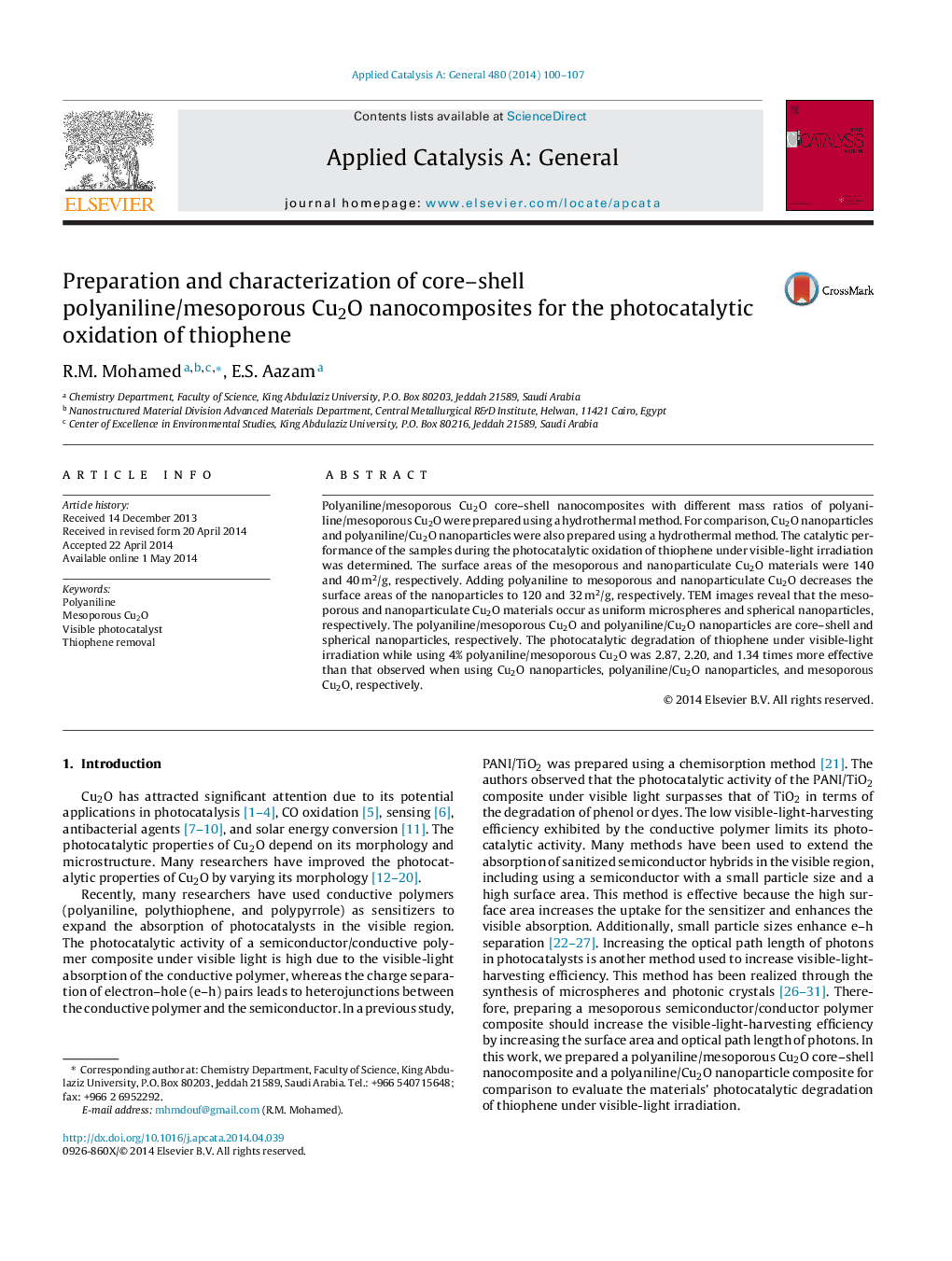| Article ID | Journal | Published Year | Pages | File Type |
|---|---|---|---|---|
| 39638 | Applied Catalysis A: General | 2014 | 8 Pages |
•A novel PANI/M-Cu2O nanocomposite was prepared.•The photocatalytic properties were studied upon visible irradiation.•PANI/M-Cu2O nanocomposite showed superior photocatalytic activity.•PANI/M-Cu2O nanocomposite remain effective and active after five cycles.
Polyaniline/mesoporous Cu2O core–shell nanocomposites with different mass ratios of polyaniline/mesoporous Cu2O were prepared using a hydrothermal method. For comparison, Cu2O nanoparticles and polyaniline/Cu2O nanoparticles were also prepared using a hydrothermal method. The catalytic performance of the samples during the photocatalytic oxidation of thiophene under visible-light irradiation was determined. The surface areas of the mesoporous and nanoparticulate Cu2O materials were 140 and 40 m2/g, respectively. Adding polyaniline to mesoporous and nanoparticulate Cu2O decreases the surface areas of the nanoparticles to 120 and 32 m2/g, respectively. TEM images reveal that the mesoporous and nanoparticulate Cu2O materials occur as uniform microspheres and spherical nanoparticles, respectively. The polyaniline/mesoporous Cu2O and polyaniline/Cu2O nanoparticles are core–shell and spherical nanoparticles, respectively. The photocatalytic degradation of thiophene under visible-light irradiation while using 4% polyaniline/mesoporous Cu2O was 2.87, 2.20, and 1.34 times more effective than that observed when using Cu2O nanoparticles, polyaniline/Cu2O nanoparticles, and mesoporous Cu2O, respectively.
Graphical abstractFigure optionsDownload full-size imageDownload high-quality image (87 K)Download as PowerPoint slide
